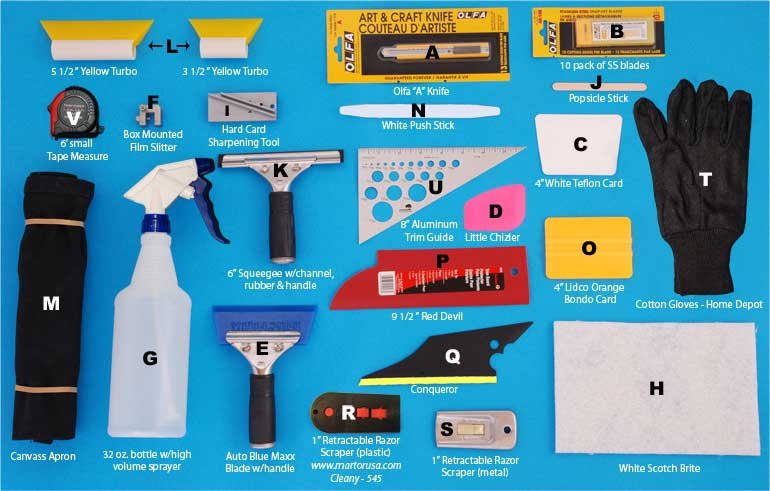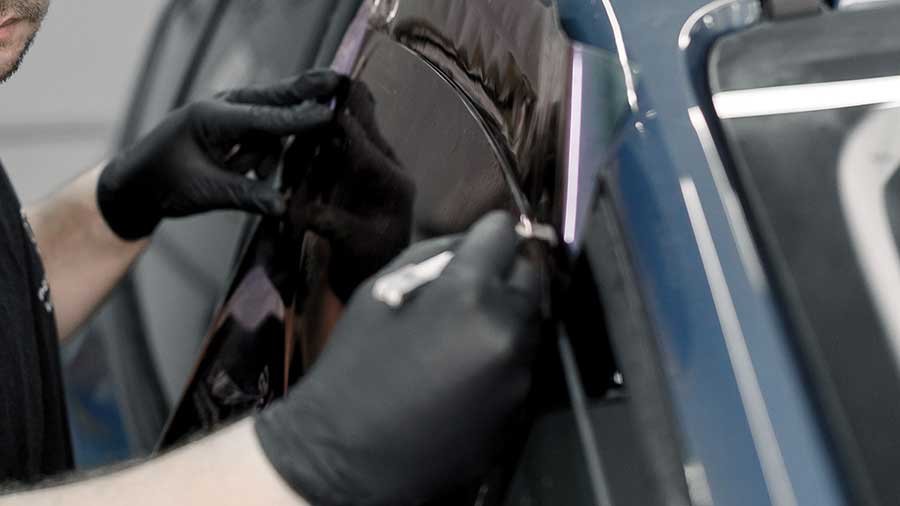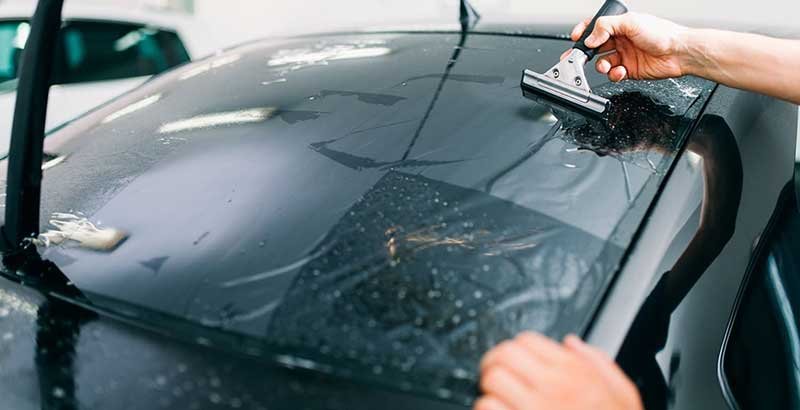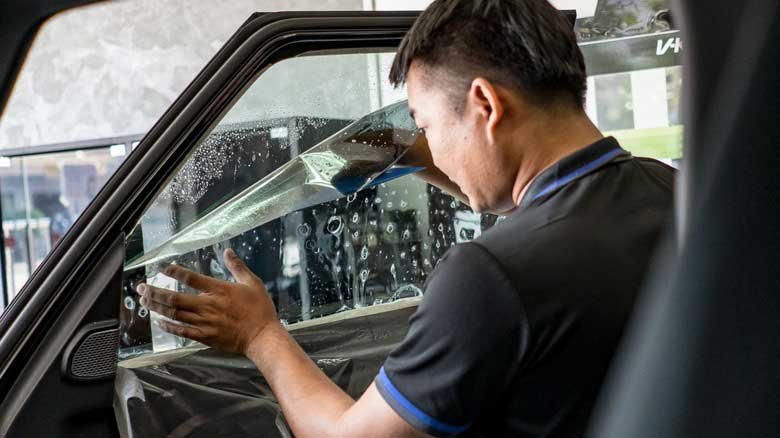If you’re looking to improve your car’s appearance, privacy, or interior protection, window tinting is a popular upgrade. But the big question many car owners ask is: Can you tint car windows yourself? The answer is yes—with the right tools, preparation, and patience. In this complete guide to DIY window tinting, we’ll break down everything you need to know before attempting this project on your own.
GTautomtl
Contact us
Contact us today – Experience Endless Shine, Unbeatable Protection.
• What Is DIY Window Tinting?
DIY window tinting refers to the process of applying tint film to your car’s windows without hiring a professional installer. Instead of paying a shop for labor, you purchase the tint film and tools yourself and handle the installation at home.
Why Some Car Owners Choose to Tint Their Windows Themselves
There are several reasons why people opt for DIY over professional tinting:

• Cost savings: Professional services can cost anywhere from $200 to $800, while a DIY kit can be under $100.
• Personal satisfaction: For car enthusiasts, there’s a sense of pride in completing a custom job themselves.
• Flexibility: You can choose your own schedule and take your time.
However, while the motivation is understandable, there are challenges that come with DIY tinting.
• Pros and Cons of Tinting Your Car Windows at Home

Advantages of DIY Window Tinting
• Affordability: You save money by avoiding labor costs.
• Learning experience: You gain a hands-on understanding of how tinting works.
• Customization: You can choose the exact tint level and finish that suits your taste.
Risks and Common Mistakes
• Lack of experience: DIY tinting has a learning curve—especially when working with curved windows.
• Dust and debris: A non-dust-free environment can ruin the finish.
• Improper installation: Air bubbles, creases, or peeling can occur if not applied correctly.
• Legal issues: Applying an illegal tint percentage may result in fines or failed inspections.
• Tools and Materials You Need for Window Tinting
Before starting your DIY window tinting project, it’s crucial to gather the right tools and understand the film options available.

Window Film Types Suitable for DIY
• Dyed Film: Inexpensive and easy to apply, but may fade over time.
• Metalized Film: Offers better heat reduction but may interfere with GPS and phone signals.
• Ceramic Film: High-performance, blocks heat and UV rays without interfering with electronics—more expensive but increasingly DIY-friendly.
• Carbon Film: Durable with good aesthetics and heat rejection, a solid mid-range choice.
Essential Tools Checklist
• Pre-cut tint kit (or bulk roll)
• Spray bottle with water + soap solution
• Squeegee or plastic card
• Utility knife or razor blade
• Heat gun or hair dryer
• Microfiber cloth
• Window cleaner (non-ammonia)
• Hard card for tucking film under seals
Having all tools ready before starting helps minimize mistakes and improve your final results.
• Step-by-Step Guide to Tinting Your Car Windows
Cleaning and Preparing the Glass

1. Park your car in a clean, dust-free garage or shaded area.
2. Use a glass cleaner (without ammonia) and a microfiber cloth to clean each window thoroughly.
3. Remove any stickers, adhesives, or residue.
4. Roll the windows down slightly to clean the top edge, then roll them back up.
Tip: Any dirt or dust left behind will show under the tint and may create bubbles.
Cutting and Applying the Film

1. Unroll the film and lay it on the outside of the window to trim it to size, leaving an extra inch for adjustments.
2. Use a heat gun to shape the film to the curvature of the window (especially for rear windows).
3. Peel the liner off the tint film carefully.
4. Spray the adhesive side and the window with your water/soap solution.
5. Apply the film to the inside of the window, starting from the top and working downward.
Removing Air Bubbles and Ensuring a Smooth Finish

1. Use the squeegee to push water and air bubbles out from the center to the edges.
2. Apply gentle heat with the heat gun to help the film conform and dry.
3. Use a hard card wrapped in a microfiber cloth for a final pass.
Take your time with each window to avoid creases, contamination, or misalignment.
• Legal Considerations and Mistakes to Avoid
Window tint laws vary significantly depending on your country, state, or province. It’s essential to be aware of local regulations before you begin.

How to Stay Within the Law When Doing It Yourself
• Check VLT limits: VLT (Visible Light Transmission) refers to how much light passes through the window. Each jurisdiction has a legal limit, especially for front-side windows.
• Look up specific laws: For example, in most parts of Canada, front windows must allow over 70% light in, while in some U.S. states, you can go darker.
• Avoid mirrored or colored tints: Some regions restrict reflective films.
Read more
• For more information about window tinting laws in Canada, read this article
Mistakes That Can Lead to Fines or Poor Results
• Going too dark on the front windows.
• Applying tint on the windshield (except for a legal sun strip).
• Leaving air bubbles or folds that reduce visibility.
• Not removing door panels for a clean edge—this results in peeling and poor longevity.
Failing to meet legal standards can lead to tickets, rejections at inspection stations, or insurance issues.
• When You Should Consider Hiring a Professional Instead
DIY tinting can be satisfying, but it’s not always the best option. You should consider going to a professional if:
• You own a luxury or high-end vehicle with expensive glass or electronics.
• Your car has complex curved windows or frameless glass.
• You live in an area with strict tint laws.
• You want a warranty on the installation.
• You don’t have a dust-free indoor workspace.
Professionals have access to higher-grade films, plotters for precision cutting, and years of installation experience.
GTautomtl
Contact us
Contact us today – Experience Endless Shine, Unbeatable Protection.
• Final Thoughts: Is DIY Window Tinting Worth It?
So, can you tint car windows yourself? Absolutely—but it depends on your skill level, patience, tools, and expectations.
DIY window tinting can save money and provide a rewarding experience, especially for straight-forward vehicles and basic film choices. However, mistakes can be costly, both in terms of aesthetics and legality.
If you’re detail-oriented, patient, and equipped with the right materials, DIY can be a great choice. But if you’re short on time, unsure of local regulations, or own a vehicle with sensitive features, it may be best to trust a professional installer.
In the end, it’s all about what you value more: time and precision or cost savings and the learning experience.






